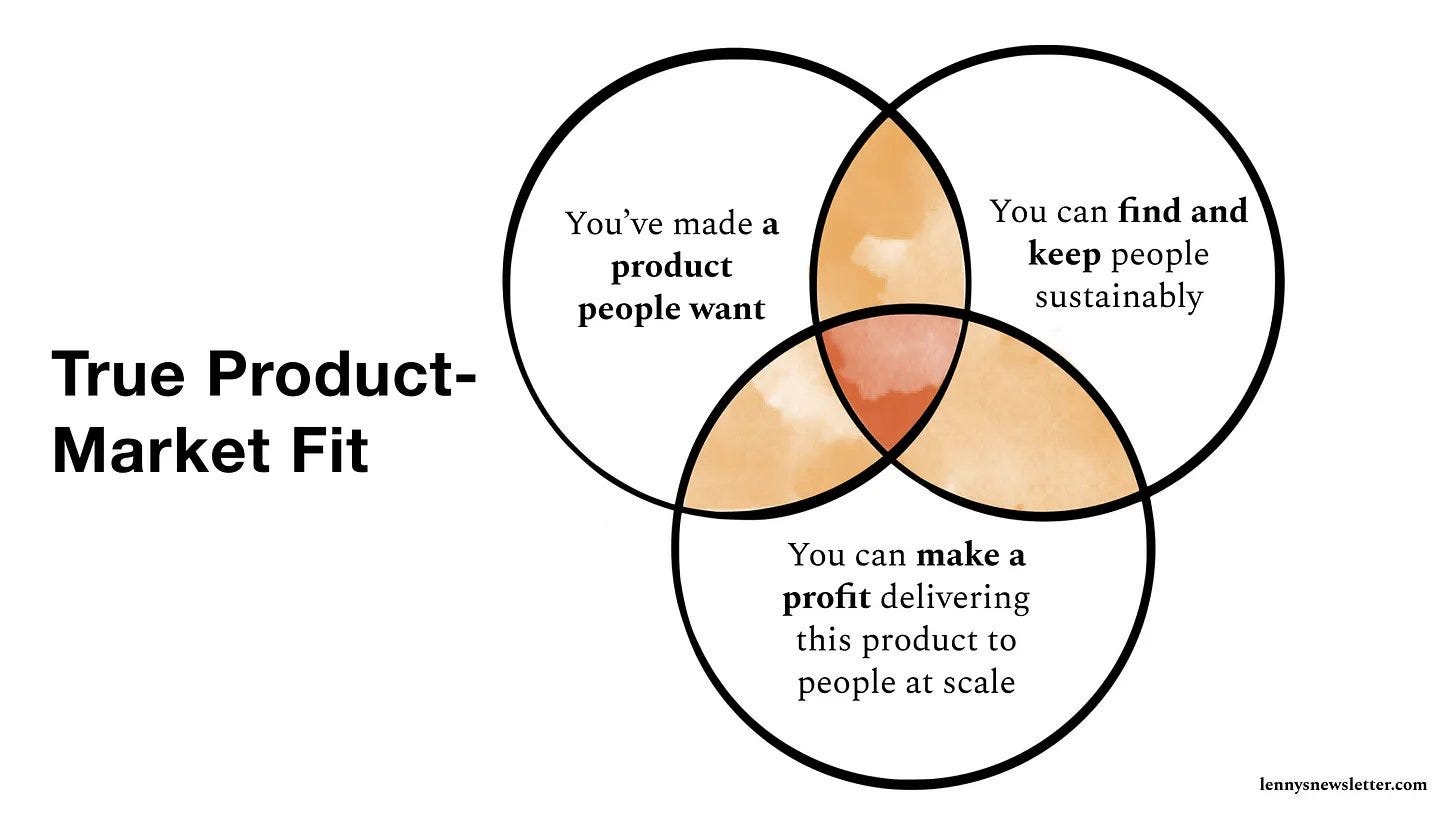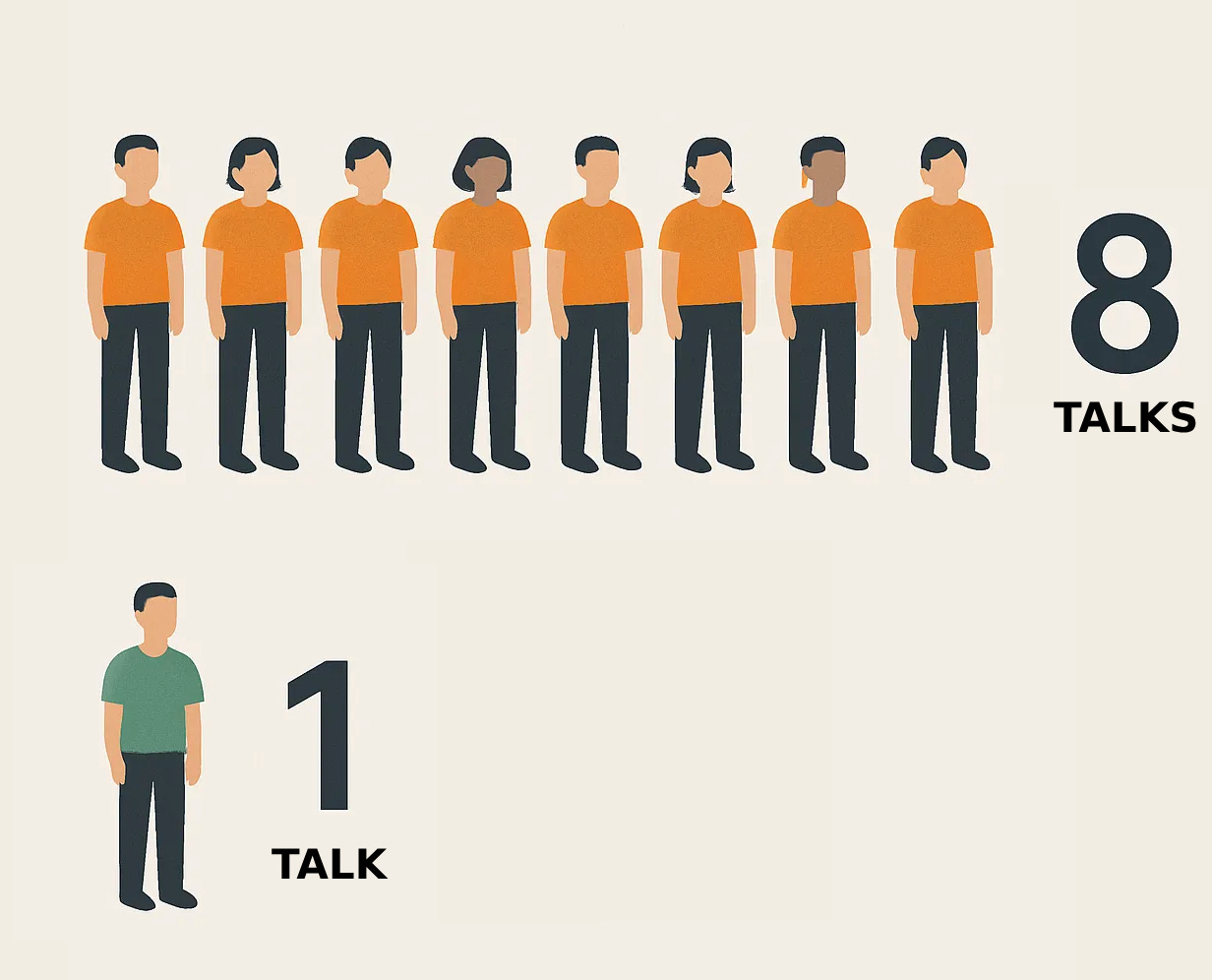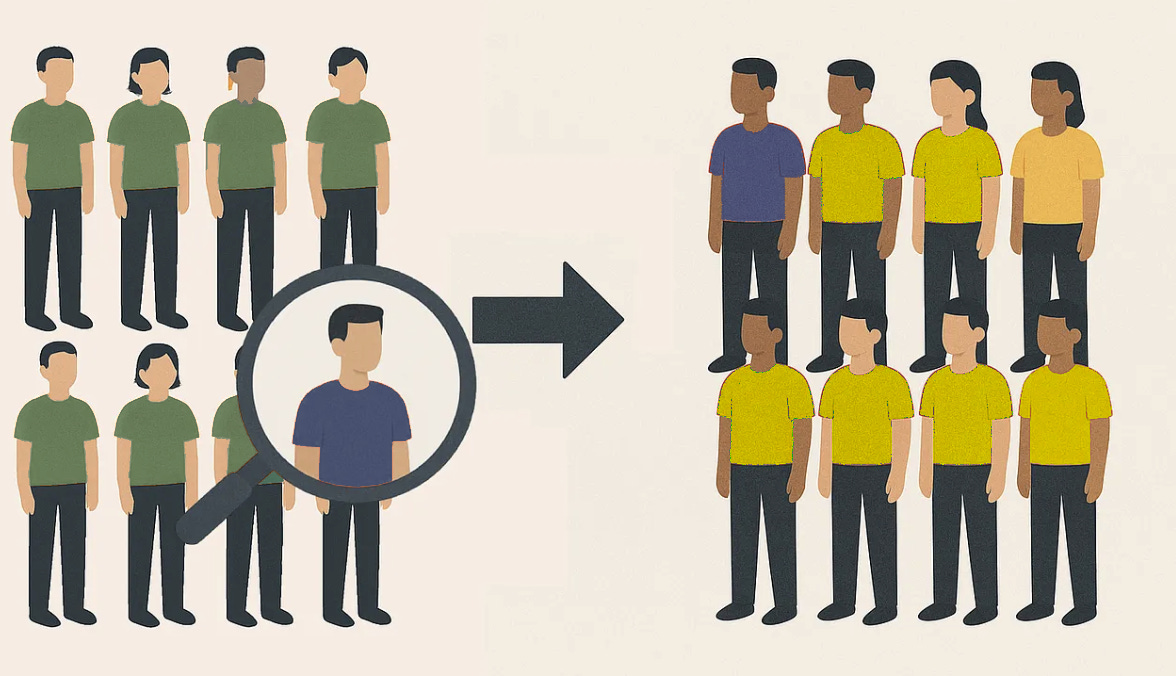This is how beachheads boost product-market fit
How niching down gets you to a repeatable sales process
Narrowing down your initial segment is the rule of thumb for startup success
It’s called a beachhead market
Finding your beachhead can be hard, especially identifying the right traits to niche it down.
And most founders feel uneasy: it seems like the gains will be small
That's not weird.
Why target 1% of the market when you can target 50%?
However, in the short run, niching down helps.
In this post, I very simply visualise how a beachhead helps to get product-market fit.
By focusing on getting a repeatable sales process
First, product-market fit
A quick definition of product-market fit.
A product people want
Finding and keeping new customers ⬅️ Core focus of this post
Make and deliver the product at a profit
This is your market
Imagine you are a founder and you have an MVP ready. The next step is doing pilots. Below, you see your market, consisting of two segments:
Orange shirts: 14 total
Green shirts: 17 total
The colour of the shirt is a metaphor for a targetable aspect. Such as age, job description, educational background, seniority in work, and income, you name it.
You have a lead list, and you email everyone in the market. 31 emails out!
9 conversations landed
Almost a 30% conversion. It turns out that you land eight conversations with orange shirts and one with a green shirt.
The conversations go pretty well. The green person agrees to a pilot, and 7 out of 8 orange people agree to a pilot. That’s a total of 8 pilots, well done!
After setting up the pilots, you continue to target more people. Who do you target next? Orange, right? Assuming all other factors, such as profit and cost per sale, are equal.
Yes, I can completely agree with that. But let’s do a quick check first.
Don’t double down on orange yet.
First, you want to investigate if orange is actually the colour you are looking for.
Is there an aspect of this person that you missed or couldn’t see before?
Out of eight, seven said yes. What was the odd one out? Was there a pattern there?
After inspecting your notes of the interviews, you noticed that they were actually wearing yellow and red.
But, the reds truly outweigh the yellows seven to one.
Hey, that's a number I recognise.
The yellow-wearing shirt was actually the person who didn’t want to do a pilot.
See you market in a new light
This is something you couldn’t see before doing the calls, but now, after, you can’t unsee it.
You look back at your market and go: woah. I should not focus on yellow, they don’t convert. I should concentrate on red only.
The red segment is a narrowed-down version of the orange
And with yellow always saying no, it doesn’t really feel like we are giving up anything, right?
Who will you target? The reds, right, if everything is equal.
But, wait a minute. What about those greens?
Now that we can recognise yellow, what happens if we re-inspect some of the greens?
Greens were dominantly yellow
Greens actually were two segments: blue and yellow.
Aah. That explains why the greens were not biting on pilots. We just learned that yellows never convert.
And that one green pilot that said yes? Turns out to be blue.
Do you enjoy these types of posts? Consider donating to buy me more time to write these pieces, starting from $2.5 per month.
This is what your market looks like
Who to target? Well, only red and blue are people who say yes.
Forget about yellow. Target red and blue.
You are getting closer to a repeatable sales process by targeting red and blue. And that is one of the cornerstones of product-market fit.
How to make this actionable
Unfortunately, your customers are not wearing t-shirts, which you can investigate. Still, want to explain why people buy you and get a repeatable sales process.
It’s all about identifying which aspects are the best predictors for sales.
Luckily, there are many aspects you can try to target or identify in conversations.
In my experience, there are two aspects: things you can find out by doing desk research, and things you can find out in interviews.
Aspects discoverable in desk research
B2B
Seniority in an organisation
Role or job descriptions
Company size
Revenue
Industry
Geographical location
Required to comply with particular regulations due to size
B2C
Part of specific communities related to your startup
Current jobs
Past jobs
Educational background
Gender
Income bracket
Urban/Rural
Discoverable in interviews
Hair-on-fire problems convert best
People who don’t care about your job don’t convert; focus on the people who have the job to be done.
Competitors used before you
Is a particular competitor pushing people away to find something better?
Are they using you in conjunction with a popular indirect competitor?
Budget willing to spend
Sometimes, people don’t have enough money to spend on their problem
Total money spent in the past on the problem
If they have already spent money on the issue, that’s a great signal.
Amount of experience or level of knowledge about the product category
Is this person a guru in your solution category or a first-time buyer?
What is a targetable aspect you discovered to be unlocking for your startup growth?
Let me know in the comments!
Need help with finding product-market fit? Get me as a mentor. Learn more.














Brilliant Piece 🌟 Thanks for sharing 🌞
I like this topic